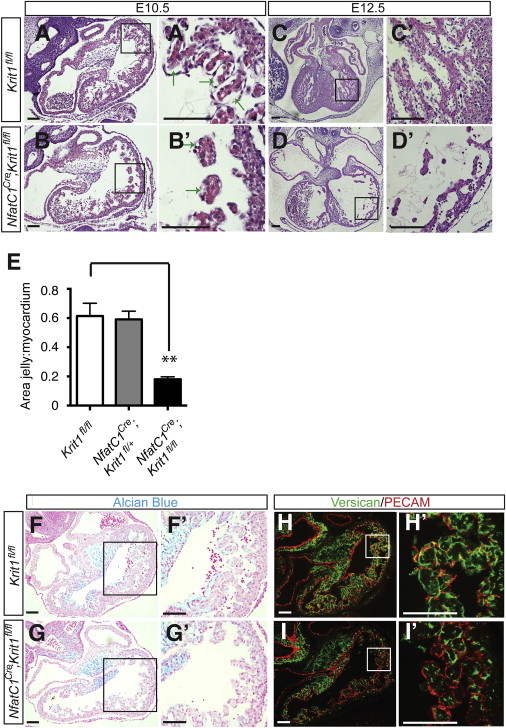Fig. 1 (A?D) Nfatc1Cre;Krit1fl/fl hearts exhibit thinned myocardium and reduced space between endocardial and myocardial cells at E10.5 and E12.5. Arrows indicate the endocardial-myocardial gap. (A?-D?) Higher magnification images of the regions boxed in (A)?(D). (E) Ratio of the area occupied by cardiac jelly to that occupied by myocardium in the trabeculae of E10.5 littermate hearts. N = 3 embryos; nine sections analyzed for each group. ??p < 0.01. Error bars represent SEM. (F and G) Reduced Alcian blue staining in Nfatc1Cre;Krit1fl/fl hearts at E10.5. (F? and G?) Higher magnification images of the regions boxed in (F) and (G). (H and I) Immunostaining for versican in Nfatc1Cre;Krit1fl/fl and control hearts at E10.5. (H? and I?) Higher magnification images of the regions boxed in (H) and (I). Scale bars represent 100 ?m.
Reprinted from Developmental Cell, 32, Zhou, Z., Rawnsley, D.R., Goddard, L.M., Pan, W., Cao, X.J., Jakus, Z., Zheng, H., Yang, J., Arthur, J.S., Whitehead, K.J., Li, D., Zhou, B., Garcia, B.A., Zheng, X., Kahn, M.L., The cerebral cavernous malformation pathway controls cardiac development via regulation of endocardial MEKK3 signaling and KLF expression, 168-80, Copyright (2015) with permission from Elsevier. Full text @ Dev. Cell

